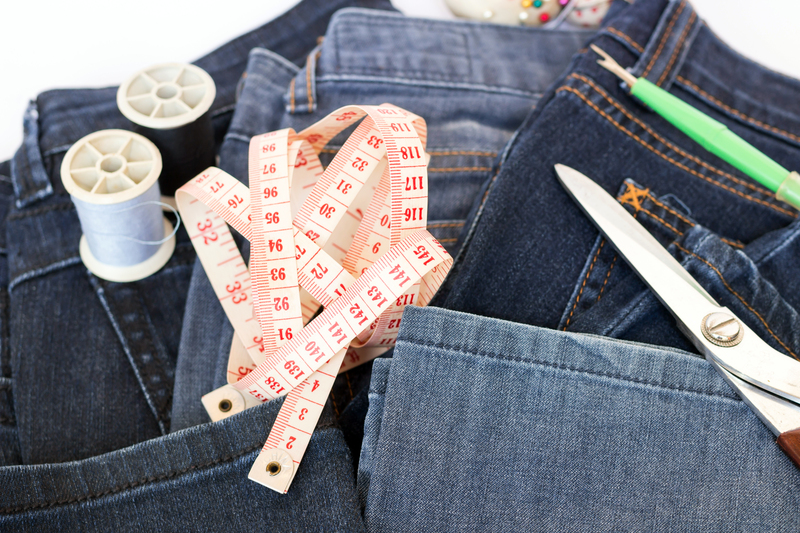Save More on Your Next Bulky Waste Cleanout Project
Bulky waste cleanout projects can feel intimidating -- both for your schedule and your budget. But with the right strategy and helpful tips, you can save money on bulky waste removal without sacrificing quality or efficiency. Whether you're clearing out a garage, attic, whole house, or construction site, learning to maximize savings while ensuring responsible disposal is key. This comprehensive, SEO-optimized guide will walk you through everything you need to know to save more on your next bulky waste cleanout project.

Understanding Bulky Waste and the Cleanout Process
Bulky waste refers to large items that aren't collected during regular garbage pickups, such as:
- Furniture (couches, mattresses, cabinets, wardrobes)
- Large appliances (washers, dryers, stoves, refrigerators)
- Electronics (old TVs, monitors)
- Yard debris (branches, tree stumps, fencing)
- Renovation debris (drywall, carpet, tiles, bathtubs)
A bulky waste cleanout project could be as simple as clearing out an old basement or as major as cleaning an entire property before a move or renovation. While the process may seem daunting, you can save money on bulky waste cleanouts by planning ahead and exploring cost-saving options.
Why Is Bulky Waste Removal So Expensive?
It helps to understand the costs behind bulky waste pickup so you can make strategic choices. Costs typically include:
- Labor: Bulky or heavy items require extra muscle and time to load.
- Transportation: Larger vehicles or dumpsters are needed to haul big loads.
- Disposal fees: Landfills and transfer stations charge more for heavy and oversized items.
- Environmental fees: Additional surcharges for disposing of items such as electronics or hazardous materials.
But you don't have to overspend! With smart planning, you can achieve significant cost savings for large waste removal.
Tips to Save More on Bulky Waste Cleanout
1. Plan and Sort in Advance
The earlier you start, the better. Sort your waste into categories:
- Items for disposal
- Items to sell or donate
- Hazardous materials (require special handling)
By sorting early, you reduce the overall pile, potentially lowering your disposal costs by diverting reusable or sellable items.
2. Sell or Donate Unwanted Items
One person's trash can be another's treasure. Consider:
- Selling usable furniture/appliances on platforms like Craiglist, Facebook Marketplace, or OfferUp.
- Donating good-condition items to local charities or non-profits (Goodwill, Habitat for Humanity, Salvation Army).
You can receive tax deductions for donations and potentially offset your bulky waste cleanout costs.
3. Check Municipal Cleanup Programs
Many cities and towns offer free or discounted bulky item collection days. Visit your local public works or waste management website to see if such programs are available. Even if these events don't align exactly with your schedule, timing your project accordingly can yield serious savings.
4. Rent the Right Sized Dumpster
Dumpster rentals are popular for large cleanouts. However, choosing the correct size is crucial. Too small, and you'll pay extra for multiple hauls. Too large, and you pay for space you don't use. Common dumpster sizes and uses:
- 10-yard: Small cleanouts (single rooms, small apartments)
- 20-yard: Medium projects (multi-room, minor renovations)
- 30-yard: Major cleanouts (large homes, serious clutter)
- 40-yard: Large, commercial, or construction waste
Get quotes from multiple providers, ask about weight limits and extra charges, and always compare reviews and included services.
5. Share the Cost
If your neighbors are also planning to dispose of large items, you may be able to split dumpster costs or collaborate on a joint removal. This approach is ideal for:
- HOAs or apartment communities
- Spring-cleaning block events
- Neighborhood "clean sweep" weekends
It's a simple, effective way for all involved to save money on bulk waste disposal.
6. DIY vs. Professional Removal
Consider your resources. If you have help and a suitable vehicle (pickup truck, trailer), a DIY cleanout can be affordable. But for larger or heavier loads, or if you're short on time, a professional junk removal service or dumpster rental may actually be more cost-effective by saving you multiple trips and potential injury. Calculate all your costs including time, gas, and dump fees.
7. Be Aware of Disallowed Items
Most dumpsters and junk removal companies prohibit certain items -- hazardous chemicals, tires, asbestos, batteries, and electronics. Sorting and disposing of these items separately can prevent costly fines and extra trips.
8. Compare Multiple Quotes
For any large-scale cleanout job, always:
- Request quotes from at least three companies
- Review included services, weight limits, and timeframes
- Ask about seasonal discounts or promotions
Don't just go with the lowest upfront price. Factor in convenience, reputation, and included disposal fees -- a hidden charge can erase any savings.
Smart Strategies to Maximize Cleanout Savings
Rent or Borrow Tools and Equipment
If you're handling the cleanout yourself, don't rush out to buy new tools. Borrow or rent dollies, hand trucks, moving blankets, and gloves from friends, family, or local hardware stores. This not only saves you money during your bulky cleanout project but supports sustainability.
Time Your Project Wisely
Look for off-peak seasons for better rates. Avoid holidays or popular spring/fall cleanup periods, when services and dumpsters may be in high demand. Scheduling during quieter times may earn you discounts or faster service.
Reduce the Waste Volume
Break down and flatten items where possible. Dismantle furniture, cut up carpet, or crush boxes to fit more in each bin or dumpster. This increases your load capacity -- meaning fewer trips and lower costs.
Check for Special Item Rebates
Some municipalities or businesses offer rebates for recycling appliances (e.g., old fridges, air conditioners, or electronics). Before tossing, see if you can receive a cash-back bonus or utility credit for properly recycling these bulky items.
How to Choose the Best Bulky Waste Removal Service
Assess Your Waste
- Volume: Estimate how much material you truly have. Overestimating leads to inflated costs.
- Types: Make sure your provider can handle your specific items.
- Accessibility: Check if there are obstacles (stairs, narrow doors, long carryouts) that could add fees.
Compare Service Models
- Full-service junk removal: Labor included, items loaded by crew, usually more convenient.
- Dumpster rental: DIY loading, keeps costs lower, ideal if you have time to load gradually.
- Drop-off programs: You bring items to a central site or transfer station, often for a reduced fee.
Read the Fine Print
Look for:
- Weight limits and fees for overages
- Rental period duration (how many days you have the dumpster)
- Permit requirements if placing dumpsters on the street
- What is covered in the basic fee vs. extra/hidden charges
Frequently Asked Questions About Bulky Waste Cleanouts
What is considered "bulky waste"?
Bulky waste typically includes oversized items too large for regular garbage collection, such as furniture, major appliances, mattresses, carpeting, construction and renovation debris, large yard waste, and certain electronics.
What's the cheapest way to get rid of bulk items?
- Find free pickup events organized by your city/municipality
- Sell or donate usable items
- Bring waste to a transfer station yourself, if you have the means
- Share costs via a neighborhood cleanup
Can I mix construction debris with household junk?
Check with your local provider. Many dumpster rental companies allow mixed loads, but may charge more for construction and demolition (C&D) material due to weight and disposal restrictions.
How can I get rid of electronics and hazardous materials?
Most electronics and hazardous materials (paints, chemicals, batteries) must go to specialized recycling or disposal centers. Many regions now ban electronics from landfills -- check your local rules before scheduling a bulk waste cleanout.
Is it better to load the dumpster myself or hire a crew?
If you want to save the most money and have time and help, loading your own dumpster is cheaper. If you're on a tight deadline, lack help, or have mobility issues, paying for a professional crew is worth the convenience and speed.
Environmental Responsibility: Dispose Smartly and Sustainably
Maximizing cost savings shouldn't come at the expense of environmental health. Responsible bulk waste disposal means:
- Recycling electronics, appliances, and metals
- Donating usable furniture or building materials
- Properly disposing of hazardous materials
- Favoring companies that follow green or eco-friendly practices
Many junk removal companies now offer "green" disposal, sorting donations and recyclables before landfill runs. Ask potential providers for their sustainability policies before booking.

Quick Checklist for Saving Money on Your Bulky Waste Cleanout
- Plan ahead and start sorting early.
- Sell, donate, or recycle items before dumping.
- Find out about city or municipal bulk collection days.
- Shop around for quotes and ask about size options and deals.
- Team up with neighbors to lower costs.
- Consider the DIY route for loading if you have help.
- Watch out for overage, prohibited items, and hidden fees.
- Ask about environmental policies and rebates.
- Don't be afraid to negotiate or ask for price matching.
Conclusion: Achieve a Cleaner Space and a Healthier Wallet
With preparation and research, saving money on your next bulky waste cleanout project is entirely within reach. By sorting, donating, recycling, sharing costs, timing your efforts, and shopping for the best value, you'll declutter your space, contribute to sustainability, and avoid surprise expenses. Remember, the more you plan and the more resourceful you are, the less you'll end up paying -- and the better your cleanout results will be. Happy cleaning!
